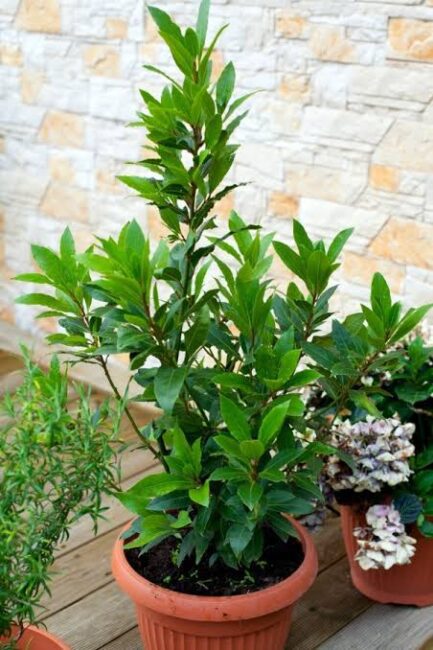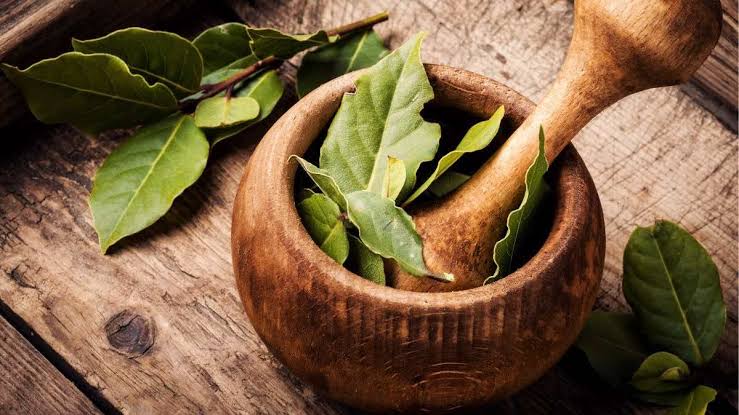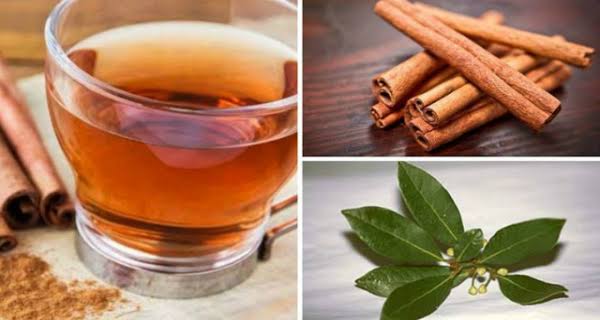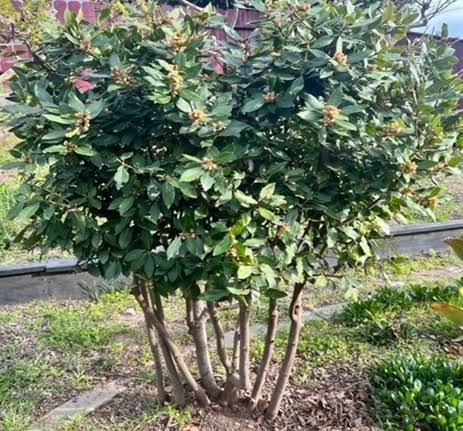Bay leaves are special leaves that come from a tree. People use them for cooking and sometimes for other things. They are thin and green and have a nice smell. When you cook with bay leaves, they can make your food taste better.
These leaves are often used in different recipes. For example, when you make soup or stew, you can put a bay leaf in there. It gives the food a good flavor. But remember, you should not eat the bay leaf because it is not tasty on its own. It is there to add flavor and aroma to your food.
Some people also use bay leaves for other purposes. They believe that bay leaves can bring good luck or keep bad things away. They might put a bay leaf under their pillow or in their wallet for good fortune. But there is no science to prove if this really works.
Bay leaves come from a tree called the bay laurel tree. This tree is an evergreen tree, which means it has leaves all year round. The leaves are picked from the tree and then dried. After they are dry, they can be stored for a long time without going bad.
In cooking, bay leaves are often used in soups, stews, and sauces. They are added to the pot while the food is cooking, and they release their flavor slowly. This gives the food a rich and aromatic taste. Bay leaves are especially popular in Mediterranean and Indian cuisines.
When using bay leaves in your cooking, it’s important to remember that a little goes a long way. You only need one or two leaves for a big pot of soup or stew. If you use too many, the flavor can become too strong and overpowering.
Bay leaves are also known for their health benefits. Some people believe that they can help with digestion and reduce inflammation. However, more research is needed to confirm these claims.
However, bay leaves are small but mighty when it comes to adding flavor to your food. They come from a special tree and have been used in cooking for a long time. Whether you believe in their other uses, like bringing good luck, is up to you. But in the kitchen, bay leaves are definitely a valuable ingredient to have on hand. Just remember to use them sparingly to enhance your dishes with their unique and delightful aroma.
Read Also: Currants Roots: Economic Importance, Uses and By-Products
How to Grow Bay Leaves

Growing bay leaves can be a rewarding experience, and it’s not too difficult to do. Here are simple steps to help you grow your own bay leaves:
1. Choose the Right Location: Bay laurel trees (from which bay leaves come) thrive in warm climates. If you live in a region with cold winters, consider growing your bay laurel in a pot so you can bring it indoors during the colder months.
Select a spot that receives full sun or partial shade.
2. Get the Right Soil: Bay laurel trees prefer well-draining soil that is rich in organic matter. A mix of potting soil and perlite or sand can work well for potted plants.
3. Choose Your Plant: You can start from seeds, but it’s often easier to purchase a young bay laurel plant from a nursery or garden center.
4. Planting: If planting in the ground, dig a hole that’s about twice the size of the root ball of your young bay laurel. If planting in a pot, make sure the pot has drainage holes and fill it with the prepared soil mix.
5. Plant Care: Water your bay laurel regularly, keeping the soil evenly moist but not waterlogged. They don’t like to dry out completely. Fertilize your plant with a balanced, slow-release fertilizer in the spring.
6. Pruning: Prune your bay laurel to maintain its shape and size. You can also harvest leaves from the plant as needed.
7. Pests and Diseases: Bay laurel trees are generally hardy, but they can be susceptible to scale insects and aphids. Keep an eye out for these pests and treat them promptly.
8. Harvesting: Bay leaves can be harvested once the tree is mature, usually after a couple of years. To harvest, simply pluck the leaves from the plant. Fresh leaves are more flavorful than dried ones.
9. Drying Bay Leaves: To dry bay leaves, simply lay them out in a single layer on a tray or screen in a warm, dry place. It may take a few weeks for them to fully dry. Once they are crispy to the touch, store them in an airtight container.
10. Using Bay Leaves: You can use your homegrown bay leaves in cooking, just like the ones you buy from the store. Remember to remove them before serving, as they can be tough and not pleasant to eat.
11. Winter Care (for Outdoor Plants): If you are growing bay laurel outdoors and you live in a cold climate, be prepared to protect your plant from frost during the winter months. You can cover it with a frost cloth or bring it indoors if necessary.
Growing bay leaves can be a fun and practical addition to your garden. With the right care, you can enjoy the fresh, aromatic leaves in your culinary creations for years to come.
16 Health Benefits of Bay Leaves

Bay leaves are not only a flavorful addition to your cooking but also offer several potential health benefits. Here are 16 health benefits associated with bay leaves:
1. Digestive Aid: Bay leaves can help improve digestion by stimulating the production of digestive juices and reducing the symptoms of indigestion.
2. Anti-Inflammatory: They contain compounds that may reduce inflammation and alleviate symptoms of inflammatory conditions like arthritis.
3. Respiratory Health: Inhaling the steam from boiling bay leaves may provide relief from congestion and respiratory issues.
4. Antioxidant Properties: Bay leaves contain antioxidants that help protect cells from damage caused by free radicals.
5. Blood Sugar Control: Some studies suggest that bay leaves may help regulate blood sugar levels, making them potentially beneficial for people with diabetes.
6. Heart Health: Bay leaves may contribute to heart health by reducing cholesterol levels and supporting overall cardiovascular function.
7. Antibacterial and Antifungal: They have natural antibacterial and antifungal properties, which can help prevent infections.
8. Pain Relief: Bay leaf oil or poultices made from crushed leaves can be applied topically to relieve pain from muscle aches and joint pain.
9. Stress Reduction: The aroma of bay leaves is believed to have a calming effect, which can help reduce stress and anxiety.
10. Improved Sleep: Bay leaf tea or infusions may promote better sleep due to their soothing properties.
11. Weight Management: Some research suggests that bay leaves may aid in weight management by increasing metabolism and reducing cravings.
12. Liver Health: Bay leaves may support liver function and help detoxify the body.
13. Kidney Health: They may also assist in maintaining healthy kidney function by promoting the removal of waste products from the body.
14. Anti-Cancer Properties: While more research is needed, some studies have suggested that compounds in bay leaves may have potential anti-cancer properties.
15. Skin Health: Bay leaf oil can be used topically to treat skin conditions like acne and rashes.
16. Hair Health: Bay leaf oil may help improve hair health and stimulate hair growth when applied to the scalp.
It’s important to note that while bay leaves offer these potential health benefits, they should be used in moderation, primarily as a seasoning in cooking. If you have specific health concerns or conditions, it’s advisable to consult with a healthcare professional before using bay leaves or supplements for medicinal purposes.
Read Also: PawPaw/Papaya Stamen: Economic Importance, Uses and By-Products
Uses of Bay Leaves

Bay leaves have a variety of practical uses beyond adding flavor to your culinary creations. Here are six good uses of bay leaves:
1. Flavoring Soups and Stews: Bay leaves are a classic seasoning for soups, stews, and sauces. They impart a subtle, earthy flavor to the dish and can enhance its overall taste.
2. Pest Repellent: Place bay leaves in your pantry, kitchen cabinets, or food storage containers to help deter common pantry pests like moths, ants, and roaches. The scent of bay leaves is unpleasant to these insects.
3. Aromatherapy and Relaxation: Adding bay leaves to your bathwater or simmering them in a potpourri can create a soothing aroma, promoting relaxation and reducing stress.
4. Homemade Cleaning Solutions: Bay leaves can be used in DIY cleaning solutions. Combine them with water and vinegar to create a natural, fragrant cleaner for countertops and surfaces.
5. Repelling Flies: Hanging a bundle of dried bay leaves in outdoor areas, such as near your patio or picnic area, can help keep flies away due to the leaves’ natural insect-repelling properties.
6. Freshen the Refrigerator: Place a few dried bay leaves in your refrigerator to help neutralize odors and keep it smelling fresh. Replace them every few weeks for best results.
These versatile leaves can serve both practical and aromatic purposes in your home, making them a handy addition to your kitchen and household.
Bay Leaves Tree

Bay Leaves Tree is a special tree that gives us bay leaves. These leaves are thin and green and they smell really nice. People use these leaves in cooking to make food taste better. The tree that gives us bay leaves is called the bay laurel tree.
This tree is an evergreen tree, which means it has leaves all the time, even in winter. The leaves from this tree are picked and dried to make bay leaves that we use in our kitchens. The tree itself can grow quite tall and can have shiny, dark green leaves.
If you want to grow a bay laurel tree, you need to find a good spot for it. It likes to be in a place that gets lots of sunlight or some shade. The soil should be good and not too wet.
Sometimes people grow bay laurel trees in pots. This way, they can move the tree inside when it gets cold in the winter. If you live in a place with warm weather all year, you can plant the tree in the ground.
When you have a bay laurel tree, you can take care of it by giving it enough water. The soil should be kept moist but not too wet. You can also put some fertilizer on the tree to help it grow strong.
Bay laurel trees can be used for more than just their leaves. Some people believe that the wood from these trees can be used for making musical instruments like guitars. But mostly, we love these trees for the tasty bay leaves they give us.
In the kitchen, bay leaves are very helpful. When you put a bay leaf in your soup or stew, it makes the food taste really good. But you have to remember to take it out before you eat because it’s not tasty on its own.
So, the bay leaves tree is a special tree that gives us these wonderful leaves we use to flavor our food. It’s a tree that likes sunlight, and with some care, it can grow and give you fresh bay leaves for your cooking. Enjoy the tasty goodness of bay leaves in your favorite recipes.
Read Also: The Importance of Channels of Distribution and Selecting an Appropriate Channel
